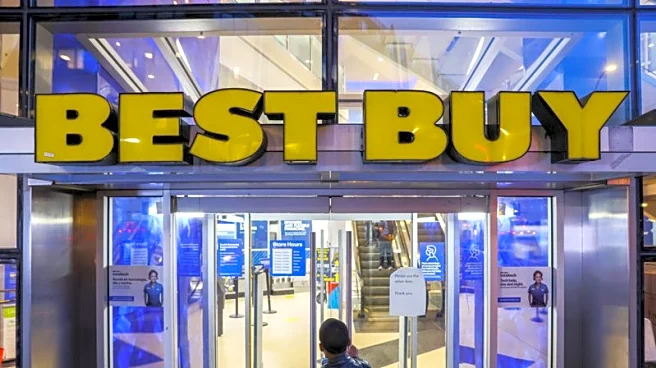What is the story about?
What's Happening?
Bath & Body Works reported a decline in second-quarter profits, missing Wall Street expectations due to increased costs and uncertain consumer spending. The retailer, known for its fragrances and scented candles, is experiencing pressure as customers reduce discretionary spending amid inflation and trade policy impacts from the Trump administration. Despite a rise in U.S. consumer spending in June and July, growth is expected to slow in the third quarter due to a softening labor market and higher goods prices. Bath & Body Works has increased marketing efforts, launching a Disney villains-themed product line for Halloween and ceramic scented candles, to position its products as affordable luxuries. The company recorded $483 million in general, administrative, and store operating expenses, marking a 9% increase for the quarter.
Why It's Important?
The financial performance of Bath & Body Works highlights broader economic challenges facing U.S. retailers, particularly those selling non-essential goods. Inflation and trade policies are influencing consumer behavior, leading to reduced spending on luxury items. This situation underscores the importance for retailers to adapt their strategies, focusing on affordability and appealing to younger demographics, such as Gen-Z, to sustain sales. Bath & Body Works' plan to sell products in 600 university bookstores is a strategic move to attract younger consumers, potentially boosting sales and brand loyalty. The company's ability to source most of its merchandise locally provides some insulation from tariffs, but exposure to international supply chains remains a concern.
What's Next?
Bath & Body Works has adjusted its annual profit forecast to account for current tariff rates, indicating ongoing financial caution. The retailer's focus on marketing and promotional strategies, including targeting college bookstores, suggests a continued effort to engage younger consumers and drive sales. The economic environment, characterized by inflation and trade policy impacts, will likely continue to challenge retailers, necessitating adaptive strategies to maintain profitability. Stakeholders will be watching for further developments in consumer spending trends and the company's ability to navigate these challenges effectively.
AI Generated Content
Do you find this article useful?













